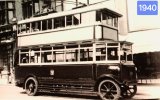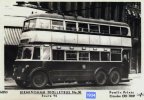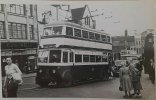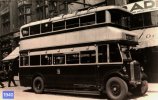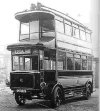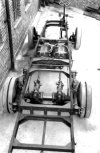From 'Tramway & Railway World', 1922
WHAT the Tramway & Railway World, London, considers the most important service of Railless trolley cars yet introduced in Great Britain, or any other country, has just been commenced by the Birmingham Corporation's tramway department. On a route which extends from Broome Square in the centre of the city to Nechells, a suburban district about 3 miles to the northeast, the tramway cars have been replaced by double-deck trolley buses. These will be operated on a four-minute headway. The replacement was made because the tramway line was worn out and it was considered cheaper to put in the trolley buses than to reconstruct the railway. The buses have a capacity of fifty-one seated passengers, twenty-six below and twenty-five above.
Twelve of these buses are under construction by Railless, Ltd., London.The drive is by two motors, each of 22-hp.
capacity, placed side by side. Each drives one of the rear wheels independently through a worm gear. There are two
independent brakes, one an internal expanding brake on the rear wheel, the other an external contracting brake at the
driving end of each motor shaft. The wheel brake can be operated either by a pedal or by hand, while the shaft brake
is operated by a pedal. Thus there are two sets of brakes, each with two braking members.
View attachment 208089
View attachment 208091

